When it comes to canine companionship in chilly climates, not all dogs are created equal. Choosing a breed that thrives in cold weather is paramount to ensure a happy and healthy coexistence. In this comprehensive guide, we'll explore a selection of dog breeds perfectly suited for colder temperatures.

Siberian Husky: The Arctic Explorer
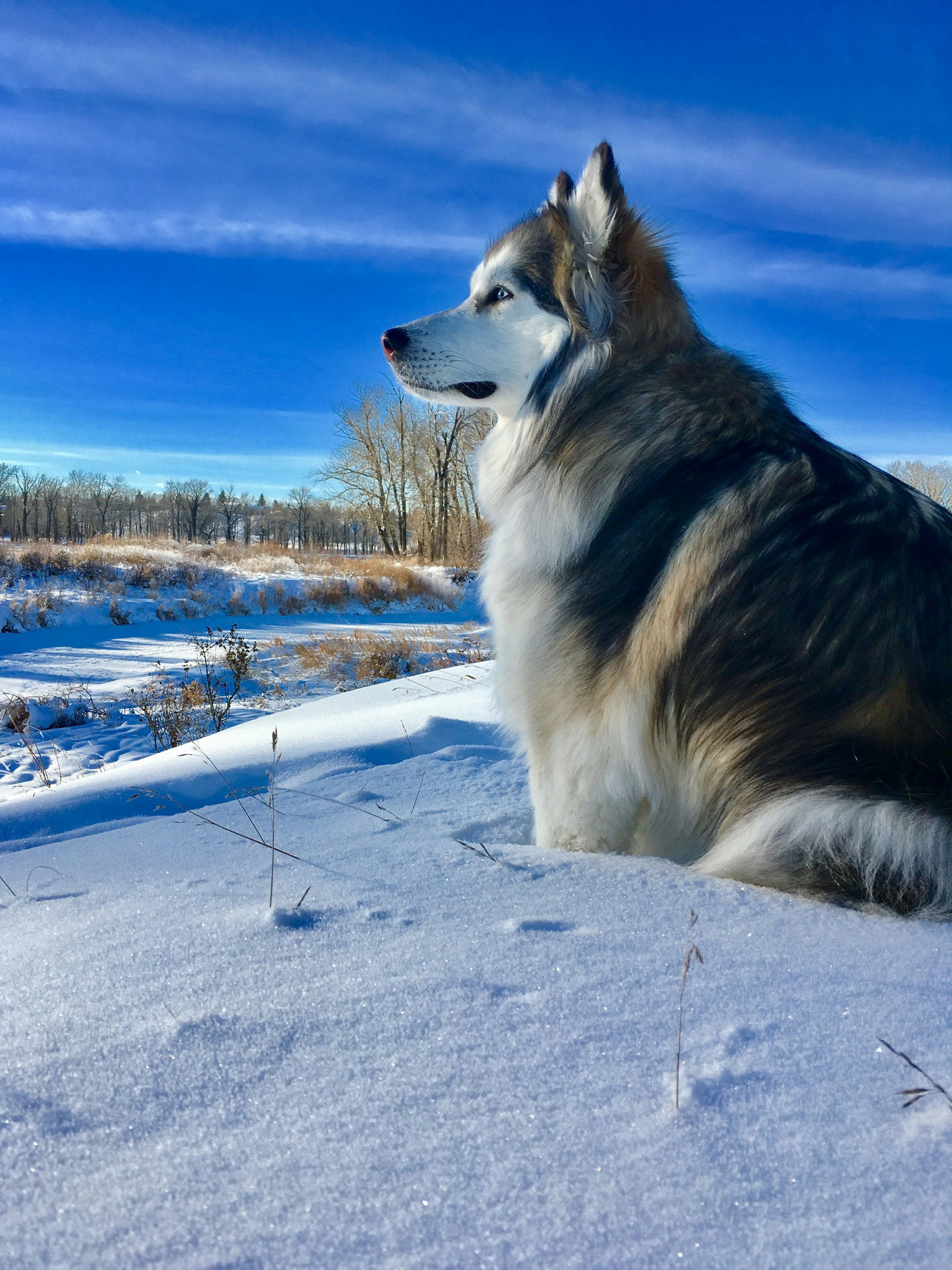
When it comes to cold-weather dog breeds, the Siberian Husky stands out as the epitome of resilience and adaptability. Originating from the harsh Arctic regions, these dogs are not just pets; they are born explorers built to endure extreme cold.
Siberian Huskies boast a distinctive appearance with striking masks, erect triangular ears, and captivating blue or multicolored eyes. Their thick double coat, consisting of a dense undercoat and longer guard hairs, serves as a natural shield against biting cold winds.
Adaptations to Cold Climates
What sets the Siberian Husky apart is its unique ability to regulate body temperature efficiently. Their double coat acts as insulation, keeping them warm in freezing temperatures and cool in warmer weather. This adaptation allows them to thrive in the Arctic, where temperatures can plummet to bone-chilling lows.
Ideal Living Conditions
For those considering a Siberian Husky as a companion, it's crucial to recreate an environment that aligns with their Arctic heritage. Regular exercise, mental stimulation, and a living space that allows for ample movement are essential. This breed thrives in households that appreciate their boundless energy and adventurous spirit.
Alaskan Malamute: Strength and Endurance
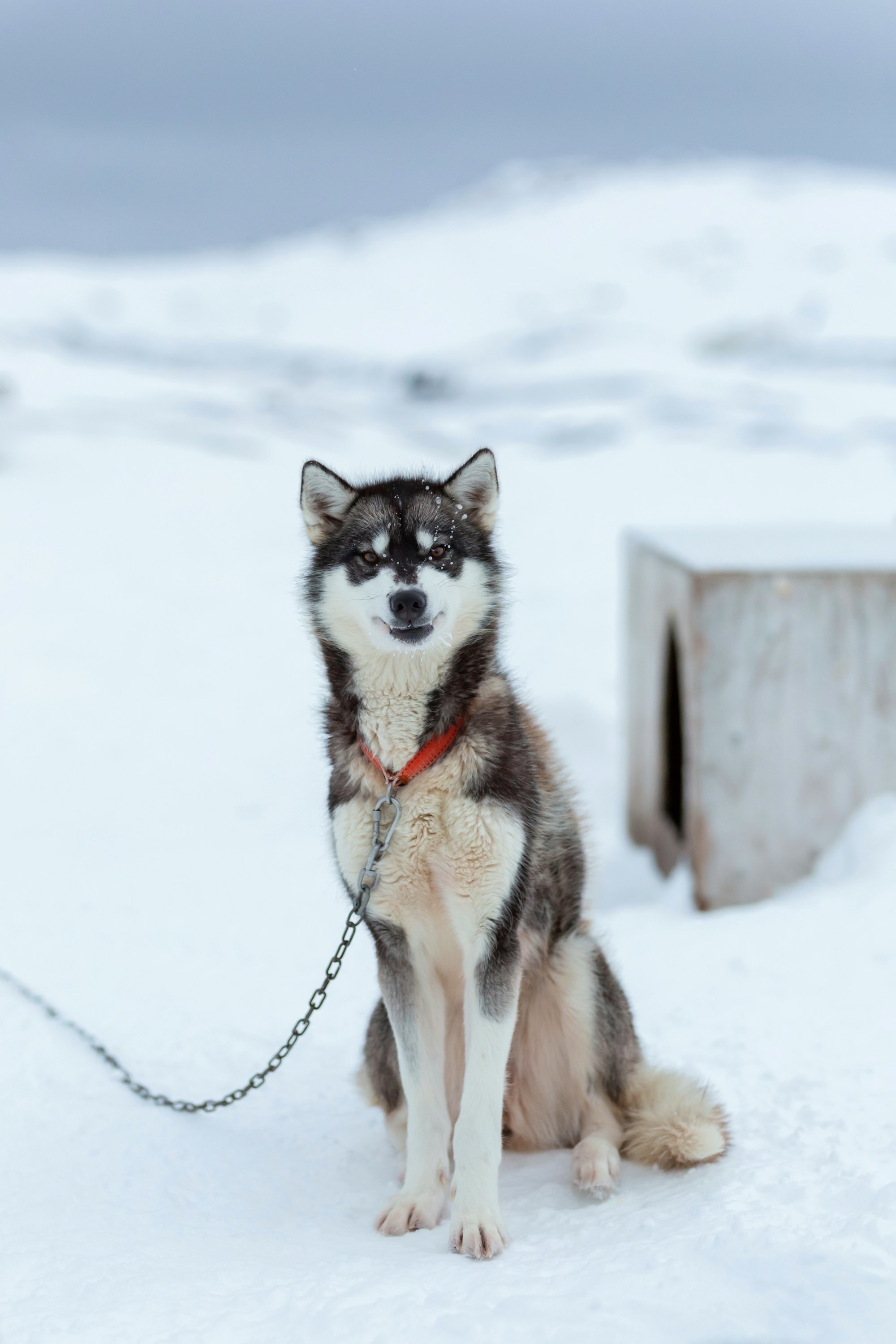
When seeking a dog with unparalleled strength and endurance in cold weather, the Alaskan Malamute emerges as an enduring force of nature. Bred by the native Inuit people of Alaska, these dogs have been essential partners in surviving the harsh Arctic conditions.
Distinctive Features
Malamutes are known for their wolf-like appearance, sturdy build, and plumed tail carried over their back. These dogs exude power and athleticism, with a broad head, erect ears, and a dense double coat that provides insulation against frigid temperatures.
Cold-Weather Endurance
Alaskan Malamutes not only tolerate cold temperatures but thrive in them. Their endurance is unmatched, making them excellent sled dogs and outdoor companions. However, it's crucial to provide them with ample exercise and mental stimulation to keep their robust spirits content.
Care Tips
Owning an Alaskan Malamute requires dedication to their physical and mental well-being. Regular grooming, particularly during shedding seasons, is vital to maintain the health of their thick coat. Additionally, engaging in activities that tap into their intelligence and strength is key to a harmonious life with these majestic canines.
Bernese Mountain Dog: A Gentle Giant in the Snow

For those who prefer a cold-weather companion with a gentle disposition, the Bernese Mountain Dog is the epitome of a giant with a heart as warm as its thick coat. Originating from the Swiss Alps, these dogs have been treasured for centuries as versatile working dogs and devoted family members.
Temperament
Bernese Mountain Dogs are renowned for their gentle and affectionate nature. Despite their large size, they are known to be excellent with children and make loyal, loving companions. Their calm demeanor is a stark contrast to the harsh weather conditions they were bred to endure.
Cold Tolerance
With a dense, long, and slightly wavy coat, Bernese Mountain Dogs are well-equipped to handle cold temperatures. Their distinctive tri-color coat not only provides insulation but adds to their majestic appearance. However, it's crucial to be mindful of their thick coat in warmer months to prevent overheating.
Grooming Requirements
Owning a Bernese Mountain Dog involves regular grooming to prevent matting and ensure the health of their coat. Brushing sessions not only maintain their appearance but also serve as bonding time between owner and dog. Despite their size, these gentle giants thrive in homes where they are an integral part of the family.
Newfoundland: The Water-Resistant Cold-Lover

In the realm of cold-weather breeds, the Newfoundland stands tall as a water-resistant marvel and a true lover of frigid temperatures. Originating from the island of Newfoundland, Canada, these dogs are not only impressive in size but also uniquely adapted to thrive in cold climates, particularly in aquatic environments.
Unique Traits
The Newfoundland is easily distinguishable by its massive size, webbed feet, and distinctive water-resistant double coat. This breed was historically utilized for water rescue due to its exceptional swimming abilities and strength. Their large, expressive eyes and gentle expression make them not only formidable in cold conditions but also gentle and endearing companions.
Handling Cold Water
What sets the Newfoundland apart is its innate ability to handle cold water with ease. The dense, water-resistant coat not only provides insulation against the cold but also aids buoyancy, making them efficient swimmers. Owners of Newfoundlands often find joy in watching these dogs thrive in aquatic activities, be it playfully in a backyard pool or purposefully in larger bodies of water.
Exercise Needs
Despite their imposing size, Newfoundlands are gentle giants that require regular exercise to maintain their overall health. Engaging in activities like swimming, brisk walks, and interactive play keeps them physically and mentally stimulated. Creating an environment that encourages both land and water activities is essential for the well-being of this remarkable breed.
Tibetan Mastiff: Guardian of the Himalayas
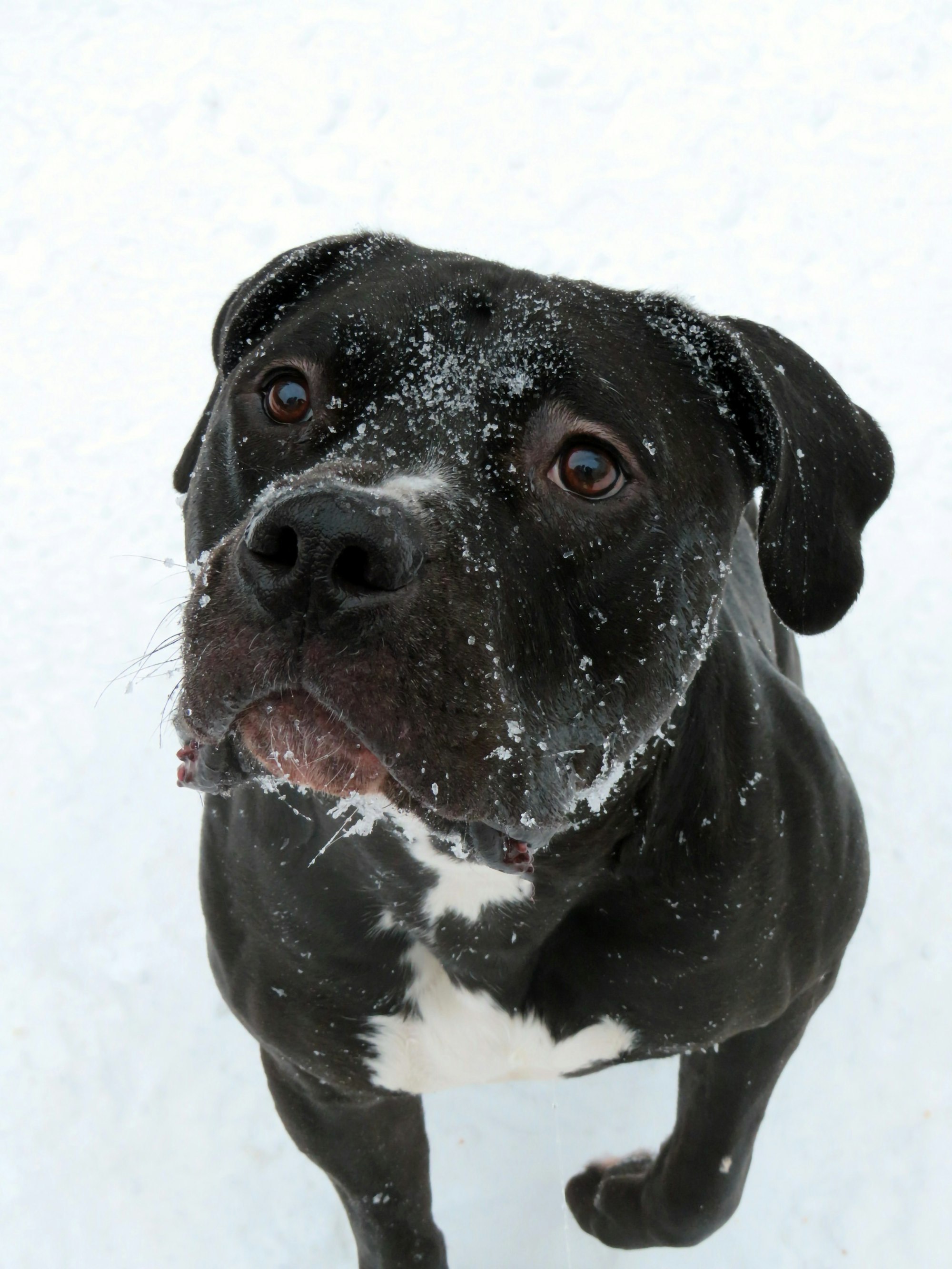
For those seeking a cold-weather companion with a rich historical background and an instinctive guardianship, the Tibetan Mastiff emerges as a formidable choice. Originating from the Himalayan region, these dogs were bred for the harsh terrains and extreme temperatures of the Tibetan Plateau.
Ancient Breed History
The Tibetan Mastiff has a lineage that dates back thousands of years, where they were revered as guardians of monasteries and nomadic camps in the Himalayas. Known for their loyalty and independence, these dogs possess an innate protective instinct that makes them exceptional guardians of both property and family.
Thick Coat Adaptation
Surviving in the high altitudes of the Himalayas requires a unique set of adaptations, and the Tibetan Mastiff's thick double coat is one such feature. This dense coat not only shields them from biting cold but also serves as a protective barrier against harsh mountain winds. Regular grooming is essential to maintain the health of their coat and to ensure they are well-prepared for extreme weather conditions.
Training and Socialization
Tibetan Mastiffs are known for their independent nature, making early training and socialization crucial. Establishing a strong bond with these dogs from a young age is vital for a harmonious relationship. While their loyalty and protective instincts make them excellent family guardians, proper training is essential to channel their innate qualities effectively.
Keeshond: The Dutch Barge Dog
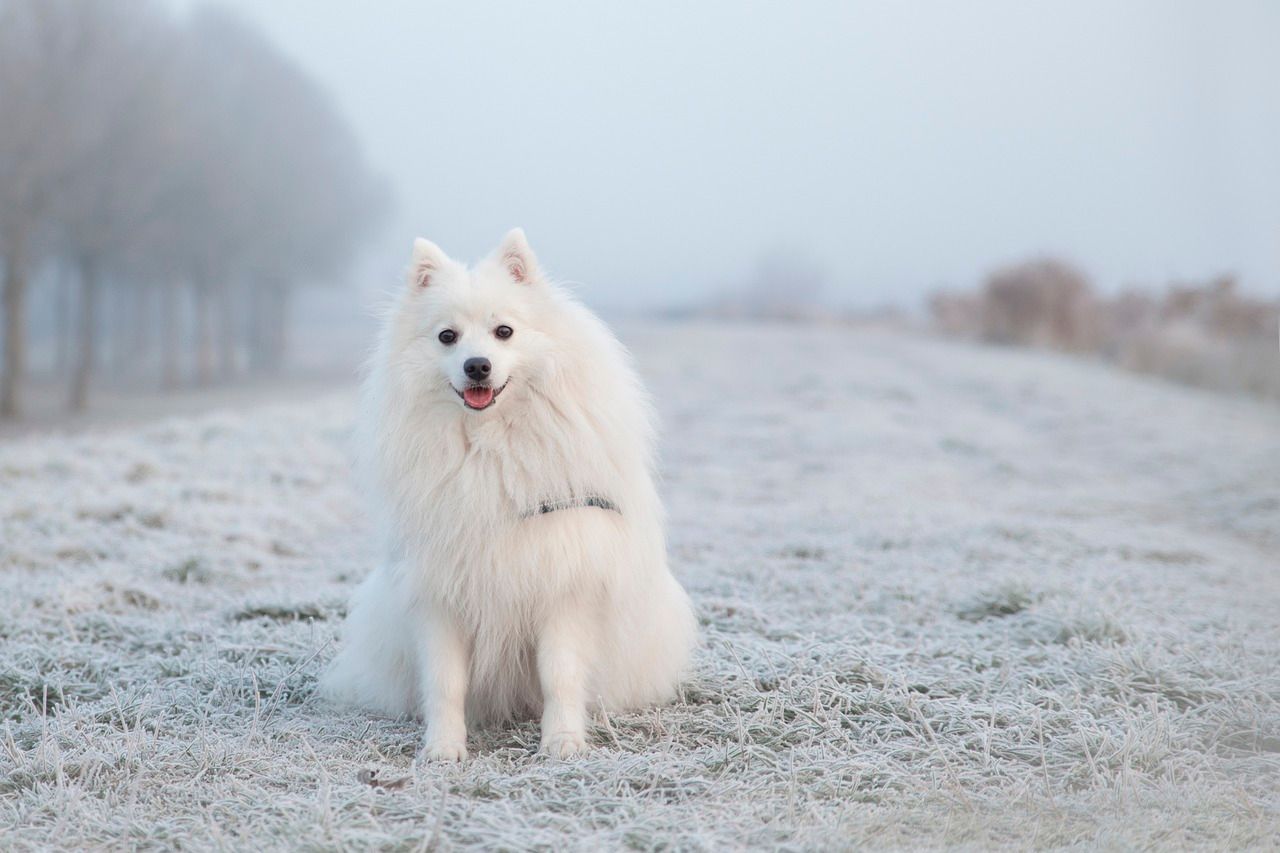
In the realm of cold-weather breeds, the Keeshond, known as the Dutch Barge Dog, brings a touch of elegance and charm. Originating from the Netherlands, these dogs have a distinctive appearance with a plush mane, expressive "spectacles" around their eyes, and a fox-like expression.
Double Layer Coat
The Keeshond sports a luxurious double-layer coat that provides insulation against cold temperatures. Their dense undercoat and longer guard hairs create a plush and fluffy appearance. Regular grooming is essential to prevent matting and maintain the health and aesthetic appeal of their coat.
Cold Tolerance
Keeshonds are well-tailored for colder climates, thanks to their thick coat and sturdy build. While they may not be as massive as some other cold-weather breeds, their adaptability to lower temperatures makes them well-suited for environments with colder weather.
Suitable Environments
These dogs thrive in environments where they are an integral part of the family. Keeshonds are known for their friendly and outgoing nature, making them excellent companions in various social settings. Their versatility and adaptability to different living conditions make them a popular choice for those seeking a cold-weather breed with a charming personality.
Samoyed: The "Smiling Sammie"
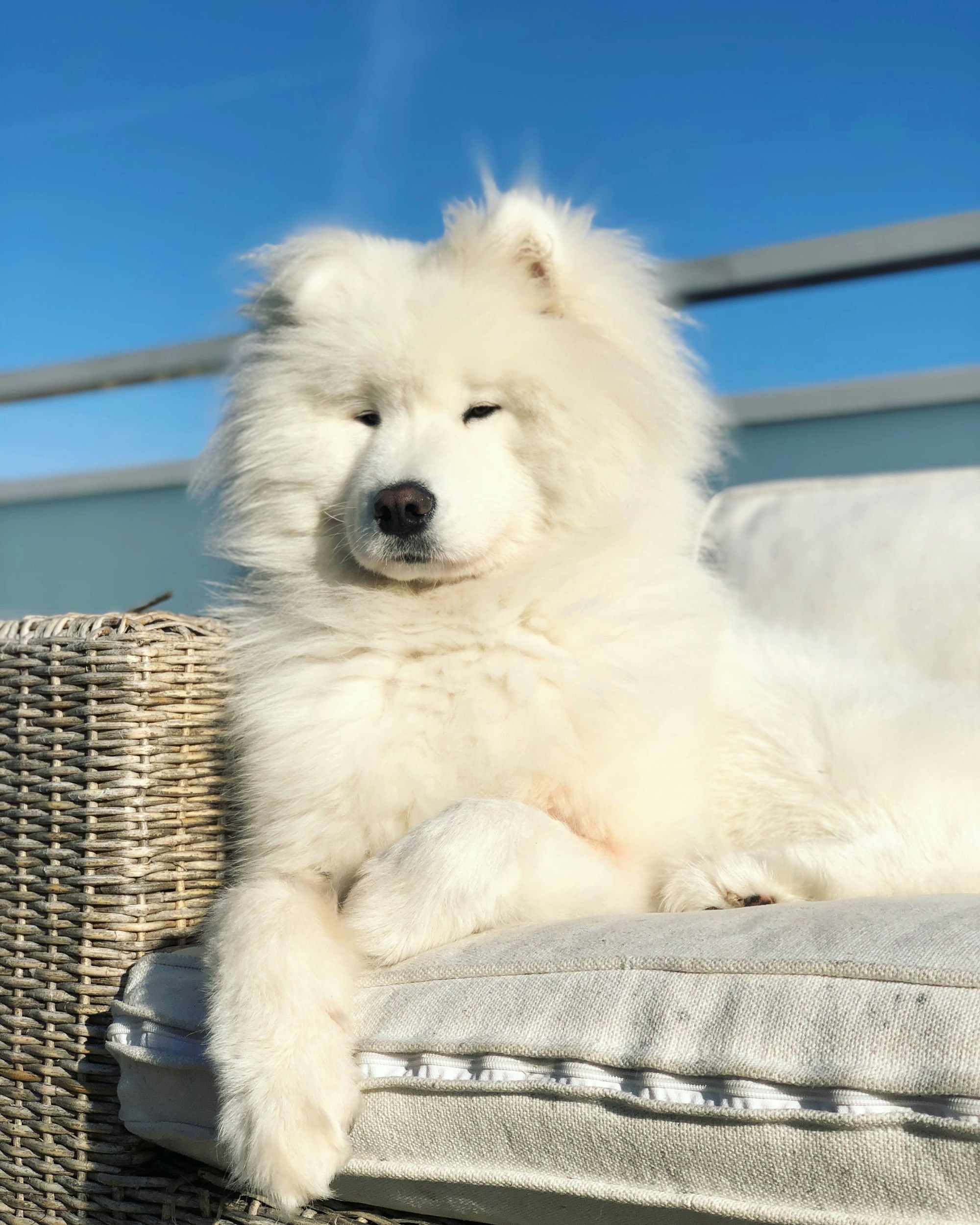
When it comes to cold-weather dog breeds that combine beauty and charm with endurance, the Samoyed, affectionately known as the "Smiling Sammie," takes center stage. Originating from Siberia, this breed is not only recognized for its distinctive smile but also for its friendly temperament and suitability for colder climates.
Friendly Temperament
The Samoyed is renowned for its friendly and sociable nature. These dogs are not only beautiful to look at, with their fluffy white coat and distinctive "Sammy smile," but they are also known for their affectionate and gentle demeanor. Their friendly disposition makes them excellent family pets, particularly in households where colder temperatures are the norm.
Coat Characteristics
What sets the Samoyed apart is its thick double coat, which serves both functional and aesthetic purposes. This plush coat not only provides insulation against cold weather but also creates the iconic appearance that gives them the nickname "Smiling Sammie." Regular grooming is essential to maintain the health of their coat and to keep them comfortable in colder climates.
Exercise Requirements
Samoyeds are not just beautiful; they are also active and energetic. Regular exercise is vital to keep them mentally stimulated and physically fit. Whether it's playtime in the snow or brisk walks in colder weather, these dogs thrive in environments that allow them to expend their energy and showcase their playful nature.
Chow Chow: The Lion-Like Guardian
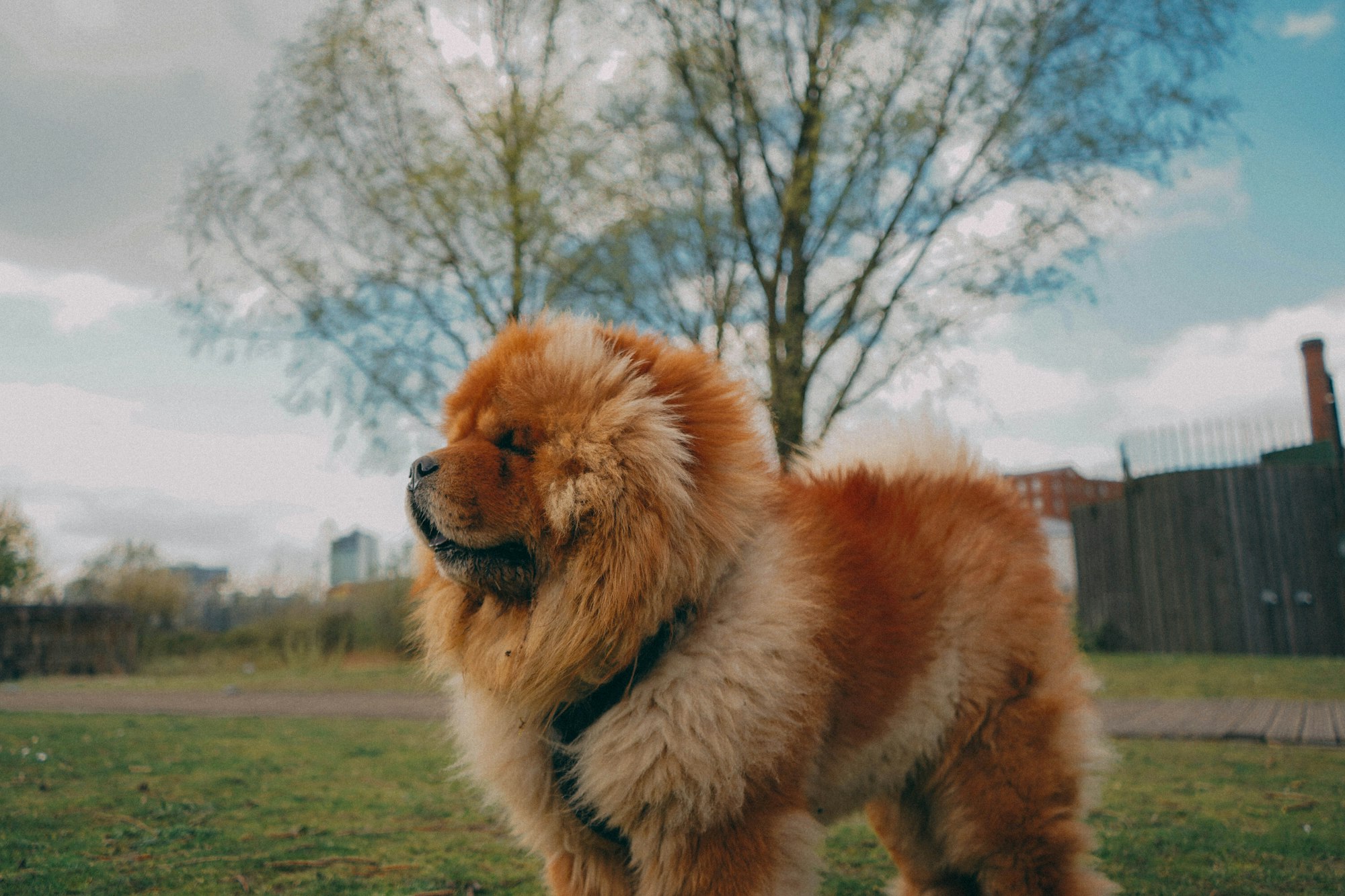
For those seeking a cold-weather breed with regal elegance and a guardian instinct, the Chow Chow, often referred to as the "Lion-Like Guardian," stands out as a majestic choice. Originating from China, these dogs have a distinctive appearance that resembles that of a lion and a temperament that exudes loyalty and independence.
Unique Appearance
Chow Chows are easily recognizable by their lion-like mane, distinctive blue-black tongue, and distinctive expression. Their sturdy build and dignified demeanor make them not only visually striking but also formidable in colder climates. The dense double coat, which can be rough or smooth, provides insulation against colder temperatures.
Adaptation to Cold Weather
Chow Chows are well-adapted to colder climates, thanks to their thick coat and resilient nature. While they may not be as exuberant as some breeds, their calm and independent disposition makes them well-suited for environments with colder weather. Regular grooming is crucial to maintain the health of their coat and ensure their comfort in varying temperatures.
Care Tips
Owning a Chow Chow involves understanding their unique needs. These dogs are known for their loyalty to their family but can be reserved with strangers. Proper socialization and early training are key to developing a well-rounded and well-behaved companion. Additionally, providing them with a comfortable living space and regular exercise supports their overall well-being.
Akita: A Japanese Cold-Weather Warrior

When it comes to cold-weather warriors with a rich cultural history, the Akita, hailing from Japan, takes the spotlight as a resilient and powerful breed. Known for their strength, loyalty, and enduring spirit, the Akita has a heritage deeply rooted in the cold landscapes of its native country.
Strong Build
The Akita is a robust and muscular breed with a strong build, indicative of its historical role as a hunting and guarding companion in Japan. Their thick double coat, erect ears, and curled tails contribute to their distinctive appearance, showcasing their adaptation to colder climates.
Cold Tolerance
Akitas are not merely tolerant of cold weather; they excel in it. Their dense coat provides insulation against harsh temperatures, allowing them to navigate snow-covered landscapes with ease. This breed is well-suited for regions with colder climates, where their resilience and endurance shine.
Training Considerations
While Akitas are known for their loyalty and protective instincts, early training and socialization are crucial. Proper guidance helps channel their strong-willed nature into positive behaviors. A well-trained Akita becomes a devoted and trustworthy companion, particularly in colder environments where their natural abilities can be appreciated.
Canadian Eskimo Dog: Northern Heritage

When exploring the domain of cold-weather dog breeds, the Canadian Eskimo Dog stands out as a testament to northern heritage and resilience. Originating from the Arctic regions of Canada, these dogs are not merely pets; they are living embodiments of a storied northern legacy.
Historical Significance
The Canadian Eskimo Dog has deep historical roots, having played a crucial role in the lives of indigenous peoples in the Arctic. Used for transportation and hunting, these dogs are symbolic of the endurance required to thrive in extreme cold. Their thick double coat and robust build reflect their adaptation to the harsh northern climates.
Physical Traits
This breed is characterized by a powerful and compact physique. Their dense fur, erect ears, and bushy tail are distinctive features that contribute to their ability to withstand freezing temperatures. Understanding the historical significance of this breed is essential for those considering them as companions, as it sheds light on their unique needs and attributes.
Exercise and Mental Stimulation Needs
The Canadian Eskimo Dog, true to its heritage, has high energy levels and a need for regular exercise. Engaging them in activities that mimic their historical roles, such as pulling sleds or participating in winter sports, is vital for their physical and mental well-being. Providing avenues for mental stimulation is equally important to keep these intelligent dogs content and fulfilled.

Norwegian Elkhound: Versatile Cold-Weather Companion
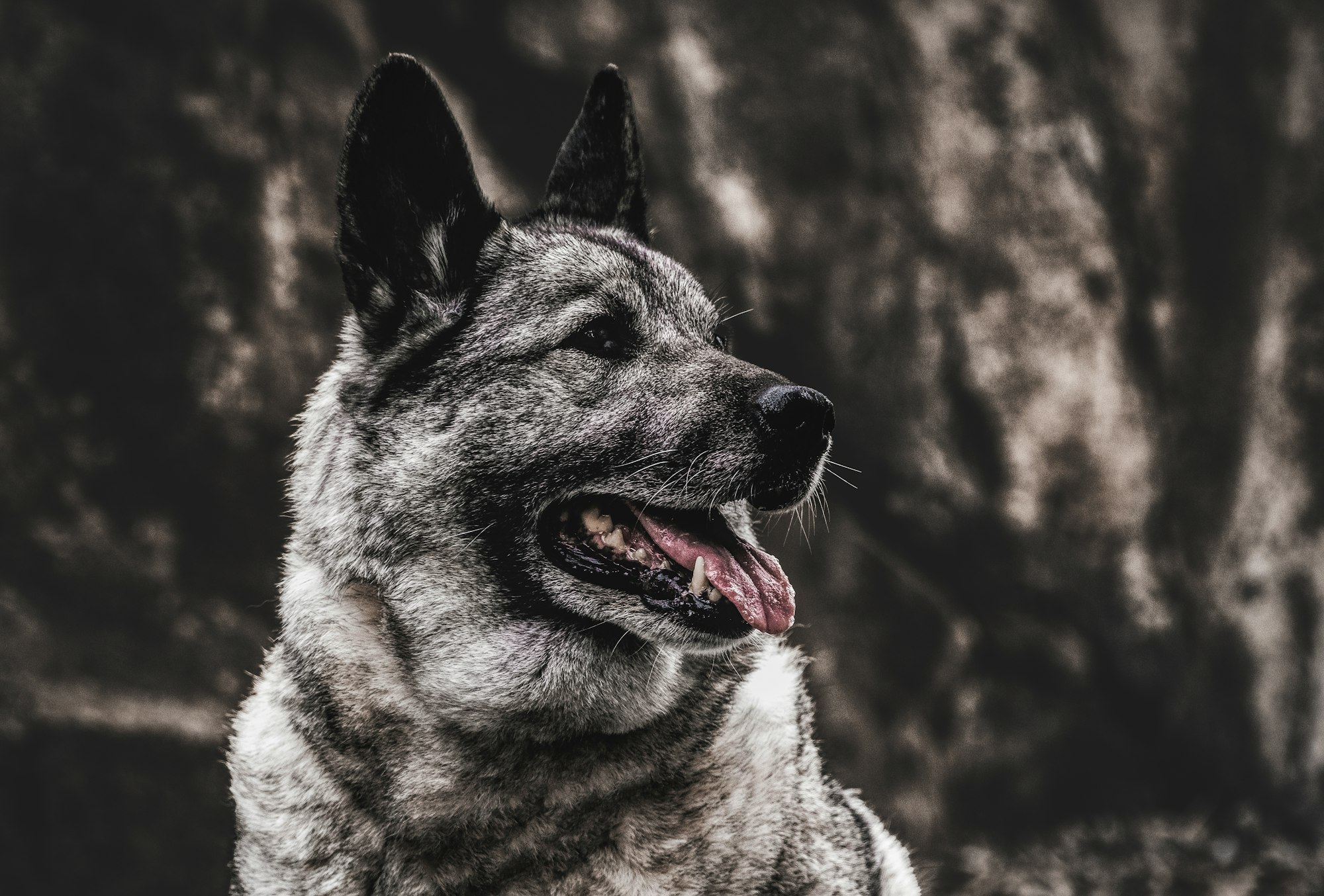
For those seeking a versatile and adaptable cold-weather companion, the Norwegian Elkhound emerges as a breed with a rich history and multifaceted capabilities. Hailing from Norway, these dogs were traditionally used for hunting large game in challenging Nordic terrains.
Hunting Origins
The Norwegian Elkhound's history is intertwined with its role as a skilled hunter. Known for tracking and holding large game such as elk, this breed's physical prowess and stamina make it well-suited for colder climates. Their thick, weather-resistant coat provides insulation against biting winds and low temperatures.
Cold Resistance
Norwegian Elkhounds exhibit remarkable cold resistance, making them reliable companions in winter conditions. Their double coat not only protects them from the chill but also sheds water, keeping them dry in snowy environments. This natural adaptation makes them resilient in colder climates, making them a preferred choice for those living in regions with harsh winters.
Interaction with Families
Beyond their historical roles, Norwegian Elkhounds make excellent family pets. Their loyalty and affectionate nature extend to all members of the household. Proper training and socialization ensure that their versatile qualities are harnessed positively, making them not just cold-weather companions but cherished members of the family.
Shiba Inu: The Small Cold-Weather Dynamo
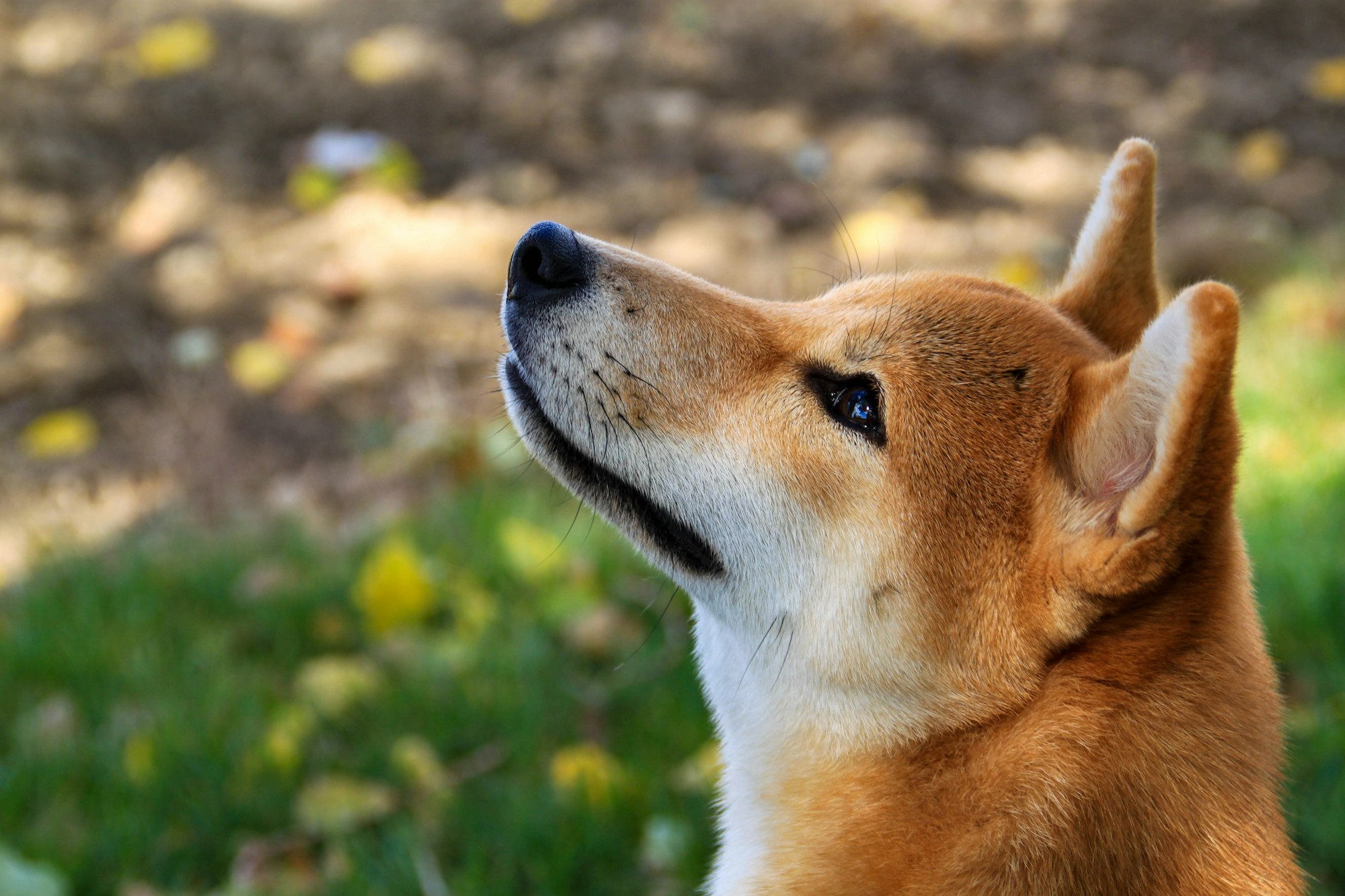
In the realm of small yet robust cold-weather breeds, the Shiba Inu, often referred to as the "Small Cold-Weather Dynamo," captures hearts with its compact size and spirited personality. Originating from Japan, these dogs may be small in stature, but they possess an abundance of energy and resilience.
Compact Size
The Shiba Inu's compact size is deceptive, as it conceals a robust and agile nature. Despite their small stature, these dogs are well-suited for colder climates, thanks to their thick double coat and inherent adaptability. Their fox-like appearance and spirited demeanor add to the charm that makes them popular as both companions and cold-weather canines.
Thick Coat
The Shiba Inu's thick double coat not only provides insulation but also contributes to their striking appearance. Regular grooming is necessary to maintain the health of their coat, ensuring it continues to serve as an effective barrier against the cold. Owners of Shiba Inus often find joy in their adaptability to various weather conditions, showcasing their resilience in colder environments.
Playful Nature
Shiba Inus are known for their playful and independent nature. Regular exercise and mental stimulation are crucial to channel their energy positively. Whether it's playtime in the snow or engaging in interactive games, these small dynamos thrive in environments that allow them to showcase their agility and intelligence.
Irish Wolfhound: Gentle Giant in the Chill

In the category of large and gentle cold-weather breeds, the Irish Wolfhound emerges as a majestic giant, unfazed by chilly temperatures. Originating from Ireland, these dogs are not just imposing in size; they are gentle giants that embody both strength and a warm-hearted nature.
Enormous Size
Irish Wolfhounds are among the largest dog breeds, with a stature that commands attention. Despite their imposing size, these gentle giants have a calm and amiable demeanor. Their massive build and thick, wiry coat contribute to their suitability for colder climates, where their presence is both comforting and protective.
Cold Tolerance
The Irish Wolfhound's dense coat provides insulation against the cold, making them well-adapted to lower temperatures. Their historical role as hunters of large game in Ireland reflects their physical prowess and resilience. Regular grooming is necessary to maintain the health of their coat and ensure their comfort in varying weather conditions.
Socialization Tips
While their size may be intimidating, Irish Wolfhounds are known for their friendly and sociable nature. Early socialization is crucial to ensure that their gentle disposition is well-balanced with a confident and well-behaved demeanor. Creating a harmonious living environment involves recognizing their need for companionship and affection.
Conclusion
In conclusion, choosing a dog breed that thrives in cold weather involves understanding their unique characteristics, adaptations, and care requirements. Whether you're drawn to the strength of an Alaskan Malamute or the regality of a Chow Chow, there's a cold-weather companion for everyone. Consider these factors carefully to ensure a harmonious and happy life for both you and your furry friend.
Frequently Asked Questions
- How do I know if a dog breed is suitable for cold weather?
- Look for breeds with thick double coats, a history of living in colder climates, and a natural resistance to low temperatures.
- Are all cold-weather breeds high-energy?
- No, while some breeds are more energetic, there's a range of temperaments among cold-weather dogs. It's essential to match a dog's energy level with your lifestyle.
- Do these breeds require special grooming in colder months?
- Yes, many cold-weather breeds have thick coats that require regular grooming to prevent matting and maintain their insulation properties.
- Can I keep a cold-weather breed in a warm climate?
- Some breeds may adapt better than others, but it's essential to consider the dog's well-being. Provide ample shade, cool water, and avoid excessive exercise in high temperatures.
- What kind of exercise do cold-weather breeds need?
- Cold-weather breeds often enjoy outdoor activities like hiking or playing in the snow. Regular exercise is crucial to keep them mentally and physically stimulated.




